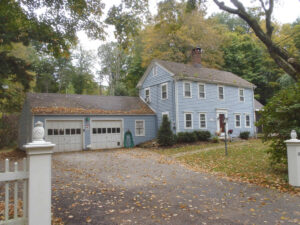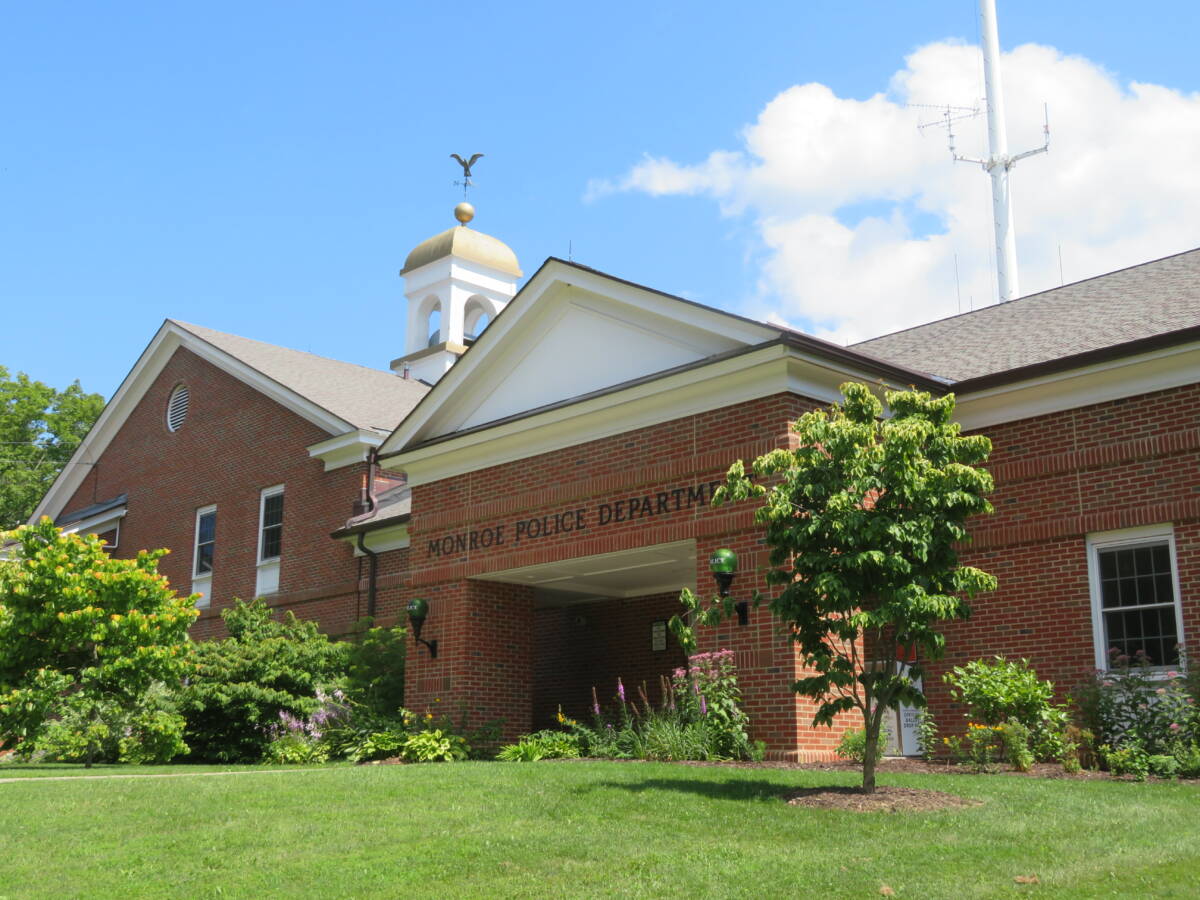MONROE, CT — The Winton Homestead, an historical house built circa 1785, sits on a 7.2-acre-property at 188 Stanley Road. The current owner sought a zoning amendment that would allow for the construction of an age-restricted housing community on the lot.
However, nine neighboring residents showed up at the Monroe Planning and Zoning Commission Regulations Subcommittee meeting Monday evening to express their disapproval of the proposal.
Organizers of a petition in opposition of allowing age restricted housing on Stanley Road garnered 165 signatures — 57 handwritten and 108 online, according to Mary Orsillo of Stanley Road, who has lived in Monroe all her life.

She said the town should promote managed growth, rather than approving retroactive changes to zoning to meet the needs of an applicant.
“Any changes to the current regulations opens the door for dense development all over town,” she said. “Why have regulations in place that can be constantly challenged and changed for an applicant’s personal gain?”
Orsillo also asked about the rights of neighboring property owners, who may have to put up with blasting, rock crushing, traffic, septic and well issues, weakened foundations and lower property values.
She also noted 188 Stanley Road’s close proximity to the Mill River-Easton Reservoir Watershed that provides public drinking water, and expressed concern over traffic safety with parents dropping off and picking up children at the YMCA camp on the road.
During the meeting, commissioners cited traffic among the reasons they believe 188 Stanley Road is not an appropriate property to establish an Age Restricted Residential District.
“I agree with the commission,” Kevin Dahl, of Easton Road, said. “It’s a dirt road. It’s narrow. There are safety issues. It’s also near a watershed. It doesn’t feel like the right property for me. People here agree.”
Orsillo also mentioned the historic character of the neighborhood with stonewalls, mature trees and The Winton Homestead at 188 Stanley Road with a rich history of button making and tanning. Monroe Historical Society Historian Kevin Daly recently wrote about it on the society’s Facebook page.
Orsillo urged the commission to vote no on the amendment and said Monroe already has age restricted housing, including Hidden Knolls, High Meadows, The Ridge, Cutlers Farm Crossing, Fairway Acres and an approval for another housing community on Main Street.
Planning and Zoning Administrator Dylan Willette also told the commission he received three letters from concerned residents.
Growing demand

Attorney Christopher Russo proposed Text Amendment: Section 3.5.1 for the town’s Age Restricted Residential District regulations. It was revised since he first appeared before the full commission at a regular meeting in June. The original application was withdrawn so Russo could rework the language in hopes of bringing it forward again.
The amendment would reduce the minimum lot size of properties eligible for an ARR from 10 to seven acres, allowing more properties to build age restricted housing to meet growing demand, according to Russo.
Properties of less-than-10-acres would have to have frontage on a major arterial or collector road and the density would be up to 3.5 units per acre, rather than five units that are allowed on the larger parcels. Russo said smaller parcels should not be allowed to have as much density.
The setbacks would be the same. It would apply to Residential Farming-2 zones, not RF-1 zones.
If adopted, Russo said the amendment would only allow the owner of an eligible property to file an application for a change to an ARR zone.
“If you don’t feel that location is appropriate, you could deny it because of the legislative capacity you have,” he told commissioners.
Affected properties
Vice Chairman Bruno Maini asked Russo how many properties the amendment would affect if the commission were to adopt the change to the ARR District regulations.
Russo said a property could be in three possible areas, near Shelton Road (Route 110) and Monroe Turnpike (Route 111), Route 59 and Main Street, and Route 34, where he said most eligible properties have frontage on the main road and would already qualify without the amendment.
If the amendment is adopted, Russo said he does not believe any applications would come from the route 110-111 area either, because most properties are zoned RF-1 and would not be eligible.
Of Route 59, he said the YMCA camp and his client’s property at 188 Stanley Road would qualify.
“This would allow someone to come to you to propose an ARR in that area and this commission would have full discretion over whether to approve it or not,” Russo said.
“We changed some stuff and I think it turned into a disaster,” Commissioner Leon Ambrosey said of past applications. “That’s something we need to sit down and see what other towns are doing. I don’t want to change regulations for specific properties.”
“A lot of regulation changes come from specific properties,” Russo said. “To me, it makes sense to be somewhere at the center of state highways. We have these pieces that are very large pieces that people want to develop.”
Ambrosey said Russo’s client knew the 7-2-acre-property was not eligible to be zoned for age restricted housing when he bought it.
Smart planning
While providing different types of housing, Commissioner Robert Westlund said commissioners also want to maintain the character of the town. “I think some residents are already concerned traffic is increasing,” he said. “Smart development is important.”
“An expanded ARR is not a bad idea,” Westlund said. “I think there is a need for it. The Stanley Road property, I just don’t understand what about it is a great location. It’s on an unsafe, unpaved road with a hairpin turn. It does not meet our regulations. It’s close to a busy intersection. It would require a total rewrite of our regulations.”
Westlund said he is open to allowing more properties to build age restricted housing, but it has to be done in a thoughtful manner.
Maini said the commission has been proactive, approving age restricted housing in several areas of town, including developments on Purdy Hill Road, Main Street and across from the Stevenson Firehouse on Route 111.
“I don’t think it’s smart planning and zoning to change it to accommodate two more properties,” he said of the ARR District regulation.
Nicole Lupo, a commission alternate, said Monroe needs more affordable housing for its seniors, but also expressed her belief that Stanley Road is not suitable for it.
“That road has a hard time with its traffic today,” Maini agreed. “I spent 16 days in Italy with those little cars and they would have trouble with that road.”
“You’re going to create more traffic on a dirt road no matter how you look at it,” Ambrosey said.
“The housing demand is there and it’s trying to find a way to be satisfied,” Russo said. “We’re trying to meet your intent of an ARR. Can we stay within the intent of this regulation on a smaller scale?”
“I think we can, but I don’t want to do it for this specific Stanley Road property,” Westlund said.
Chairman Michael O’Reilly told Russo he should talk to his client about subdivision applications.







The Purdy Hill Road, ARR development mentioned here is disingenuous because the access is on Cutlers Farm Road, and its name includes the same. Why not just call it by its real name? Also, at nearly $500K per unit being sold the definition of affordable is left to be vague.
A little over 50 years ago, I moved from overgrown Long Island to Monroe CT. Long Island started down-zoning after WW II. By 1973, Eastern sections of Suffolk county looked like Queens. In 1973, I chose Monroe CT specifically because of the 1, 2, and 3 acre zoning. It prevents overcrowding. And it also keeps taxes down. Yes down. All of that building on Long Island required massive capital expenses for schools and other municipal structures. And it also required large increases in operating expenses. If you think your taxes are high now, look at houses on any of the real estate websites and see what people are paying in the overcrowded suburbs of Long Island. And it all began one by one with exceptions made to zoning regulations. Once approved, they provided the basis for additional exceptions.